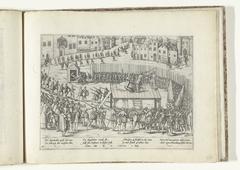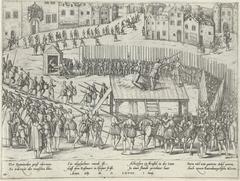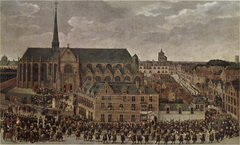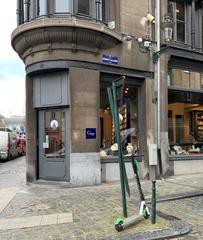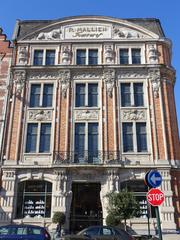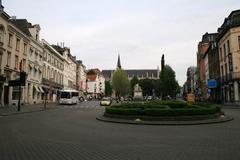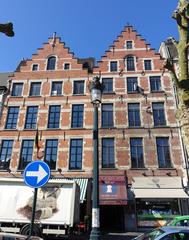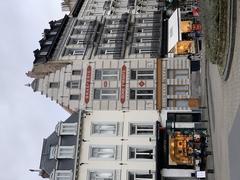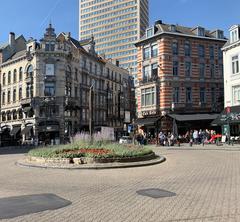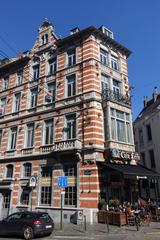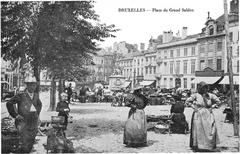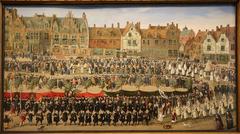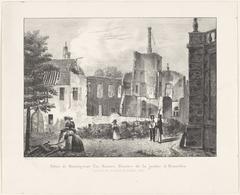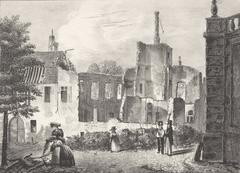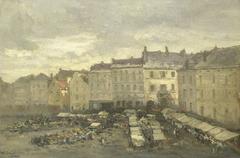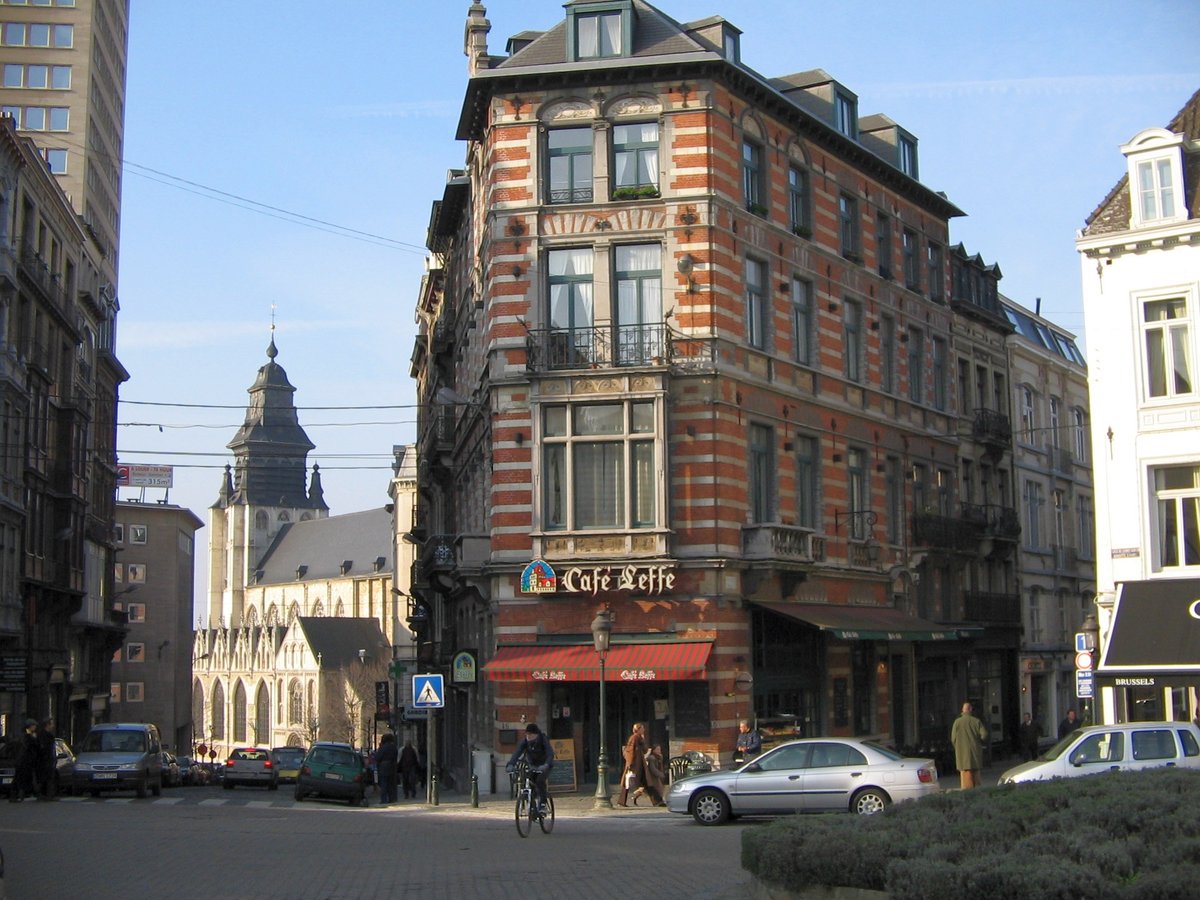
Place du Grand Sablon: Visiting Hours, Tickets, and Historical Highlights in Brussels
Date: 14/06/2025
Introduction
Nestled in the heart of Brussels’ upper town, Place du Grand Sablon (Grote Zavel) is one of the city’s most enchanting and historically significant squares. Once a sandy marshland outside the medieval city walls, it has evolved into an aristocratic and cultural hub. Today, the Sablon captivates visitors with its blend of Gothic architecture, vibrant antiques market, world-renowned chocolatiers, and lively community spirit. This comprehensive guide details visiting hours, ticketing, accessibility, top attractions, and practical travel tips to ensure a memorable experience at one of Brussels’ must-see historical sites (Brussels tourism website) (Place du Grand Sablon Wikipedia page).
Table of Contents
- Historical Overview
- Major Landmarks & Attractions
- Antiques & Art Scene
- Gastronomy & Belgian Chocolate Culture
- Events & Community Life
- Visiting Hours & Practical Information
- Suggested Itinerary
- Frequently Asked Questions (FAQ)
- Conclusion
- References
Historical Overview
Medieval Origins
The name “Sablon” is derived from the fine sand that once blanketed the hills above the Senne Valley. In the early 14th century, this marshy expanse outside Brussels’ medieval walls began its transformation into a hub of civic and religious activity. The pivotal moment came with the founding of the Crossbowmen’s Guild chapel in 1304, leading to the construction of the Church of Our Lady of Victories at the Sablon, which remains the square’s architectural centerpiece.
The Horse Market Era
Between 1320 and the mid-18th century, the square was known as “Peerdemerct” or Horse Market, serving as a major commercial and social gathering spot. Its triangular layout suited large events, and until 1615, a central pond (the “Zavelpoel”) dominated the site before making way for elegant fountains.
Aristocratic Flourishing and the Ommegang
The 16th and 17th centuries saw the Sablon become an aristocratic enclave, with grand residences belonging to noble families such as the Egmonts and De Lannoys. The annual Ommegang procession, a major religious and civic event, began here and still draws crowds today (What’s On in Belgium).
Political and Urban Transformations
The Sablon played a role in pivotal moments of Brussels’ history, such as the signing of the Compromise of Nobles in 1566 and the tragic executions that followed. The 19th century brought urban renewal, including the construction of Rue de la Régence, which further integrated the square into Brussels’ evolving cityscape.
Major Landmarks & Attractions
Church of Our Lady of Victories (Église Notre-Dame du Sablon)
A masterpiece of Brabantine Gothic architecture, the church dates to the 15th and 16th centuries and is famed for its soaring spires and intricate stained glass windows. The church is open daily from 9:00 AM to 6:00 PM, with free entry; donations are appreciated (GPSmyCity).
Fountain of Minerva
At the heart of the square, the mid-18th-century Fountain of Minerva commemorates the Roman goddess of wisdom and marks the Sablon’s transformation from a medieval cemetery to an elegant gathering place (Triphobo).
Petit Sablon Garden
Adjacent to the square, this Renaissance-style garden features 48 bronze statuettes representing traditional Belgian crafts and professions, providing a tranquil retreat and a tribute to Brussels’ artisanal legacy (Spotted by Locals).
Antiques & Art Scene
Place du Grand Sablon is Brussels’ premier location for antiques and art. The weekend antiques market (Saturday 9:00 AM–5:00 PM, Sunday 9:00 AM–3:00 PM) draws collectors and tourists with its selection of antique jewelry, books, silverware, ceramics, and more. Over 40 permanent antique dealers and galleries operate throughout the week, offering everything from 18th-century furniture to contemporary art (Petit Futé; Visit Brussels; Evendo).
Gastronomy & Belgian Chocolate Culture
The Sablon is synonymous with Belgian chocolate excellence, boasting flagship boutiques from legendary chocolatiers like Pierre Marcolini, Wittamer, Neuhaus, and Godiva. Enjoy tastings, workshops, and exquisite pastries at storied patisseries like Wittamer. The area is also home to diverse cafés, wine bars, and fine dining, making it a gastronomic destination (Evendo).
Events & Community Life
The square is a vibrant social space, especially on weekends during the antiques market. Place du Grand Sablon hosts public events throughout the year: open-air concerts, art fairs, food festivals, and the festive Sablon Christmas Market. The Ommegang procession, a UNESCO-recognized tradition, begins here, celebrating Brussels’ storied past (What’s On in Belgium).
Visiting Hours & Practical Information
Tickets & Admission
- Place du Grand Sablon: Open 24/7, year-round; free to enter.
- Église Notre-Dame du Sablon: Open daily, 9:00 AM–6:00 PM; free entry, donations welcome.
- Antiques Market: Saturday 9:00 AM–5:00 PM; Sunday 9:00 AM–3:00 PM; free admission.
- Art Galleries: Generally open Tuesday–Saturday, 10:00/11:00 AM–6:00 PM; check individual gallery websites for details.
Accessibility & Getting There
- Public Transport: Easily reached by tram lines 92, 93; bus lines 46, 95, 27, 48. Nearest metro stops: Louise, De Brouckère, Porte de Namur.
- Parking: Limited; Interparking Sablon-Poelaert offers paid parking.
- Mobility: The square is pedestrian-friendly and wheelchair accessible, though cobblestones may require care.
Travel Tips
- Best Time to Visit: Spring and autumn for mild weather and fewer crowds; weekends for market activity.
- Cash/Card: Most venues accept cards, but some market stalls prefer cash.
- Language: French and Dutch are official; English is widely spoken.
- Safety: Pickpocketing can occur in crowded markets—keep valuables secure.
- Restrooms: Limited public facilities; cafés and restaurants generally for customers only.
- Photography: Early morning or late afternoon offers optimal light and fewer people.
Suggested Itinerary
Morning: Enjoy pastries at Wittamer and visit Église Notre-Dame du Sablon.
Midday: Browse the antiques market and explore art galleries.
Afternoon: Relax at Petit Sablon Garden or nearby Egmont Park.
Evening: Dine at a terrace restaurant; indulge in Belgian chocolates for dessert.
Frequently Asked Questions (FAQ)
Q: What are the visiting hours for Place du Grand Sablon?
A: The square is open 24/7. The church is open daily 9:00 AM–6:00 PM.
Q: Is there an entrance fee?
A: No, visiting the square, church, and antiques market is free. Donations are appreciated at the church.
Q: Are guided tours available?
A: Yes, local operators offer themed walking tours; self-guided tours via mobile apps are also available (GPSmyCity).
Q: Is the area wheelchair accessible?
A: Yes, though cobblestones may pose some difficulty.
Q: When is the antiques market held?
A: Saturday 9:00 AM–5:00 PM, Sunday 9:00 AM–3:00 PM.
Conclusion
Place du Grand Sablon is a vibrant crossroads of history, art, gastronomy, and community life. Whether you’re exploring its Gothic church, browsing the antiques market, savoring Belgian chocolates, or relaxing in a tranquil garden, the Sablon offers a quintessential Brussels experience. For the latest updates, event listings, and personalized travel tips, download the Audiala app and consult the official Brussels tourism website.

